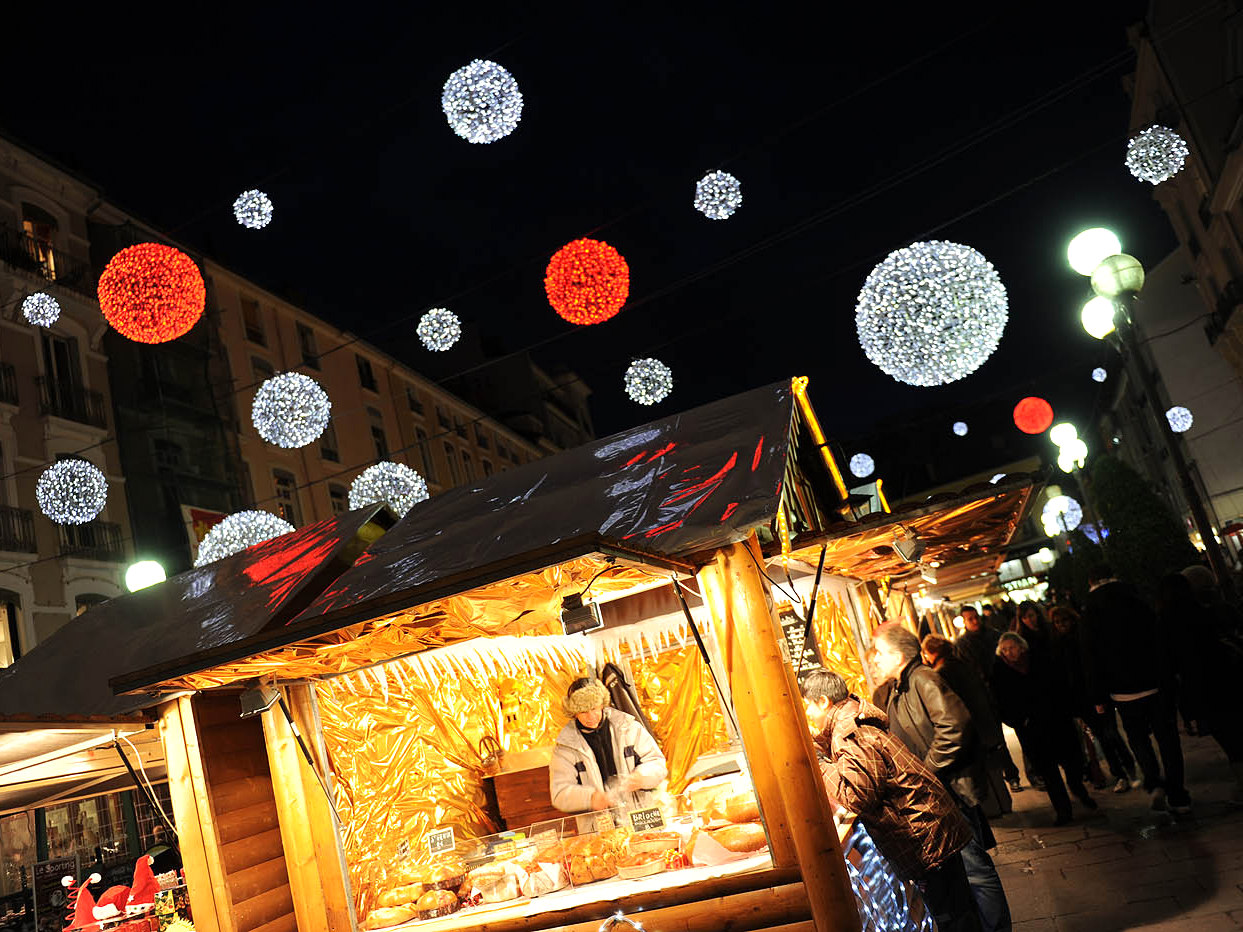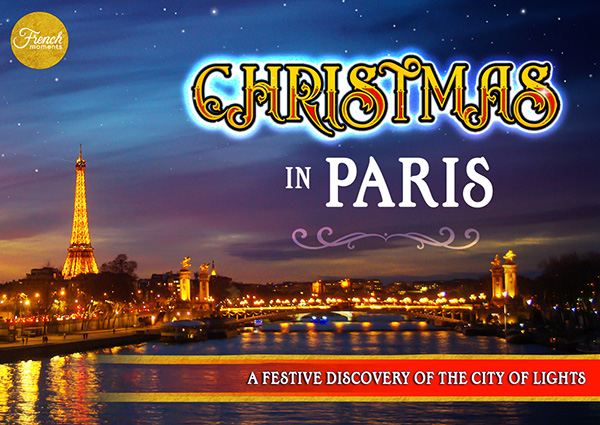Since its creation in 1994, the Christmas market of Grenoble has become one of the most popular in the Rhône-Alpes region. The beautiful site of Grenoble, surrounded by the mountains of the French Alps, fits well with the festive atmosphere during Advent. Let’s find out why you should visit Grenoble at Christmas time!
Grenoble: Christmas Market in the Alps
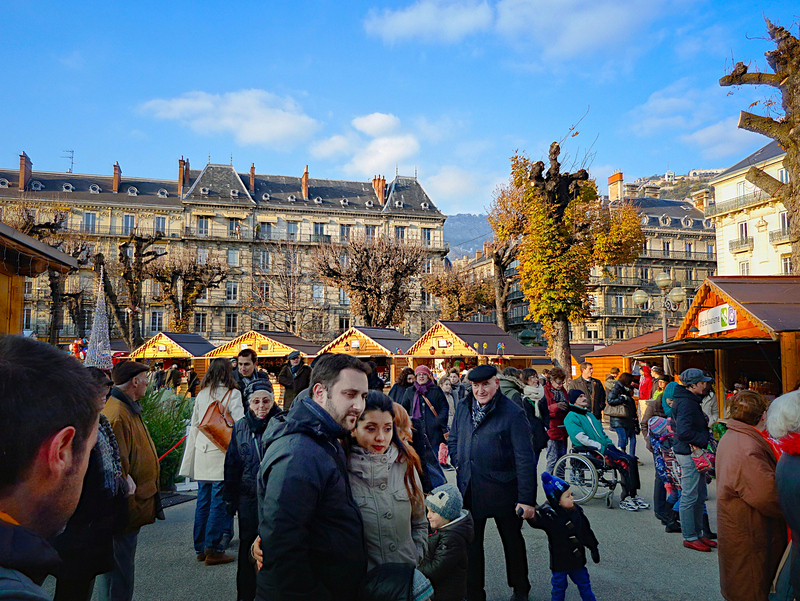
The Grenoble Christmas market takes place in the centre of town, along Place Victor Hugo, Rue Félix Poulat and Place Grenette, bordered by authentic Haussmann-style buildings.
The Christmas market is organised by the Tourist Office for the City of Grenoble and draws more than 500,000 visitors each year.
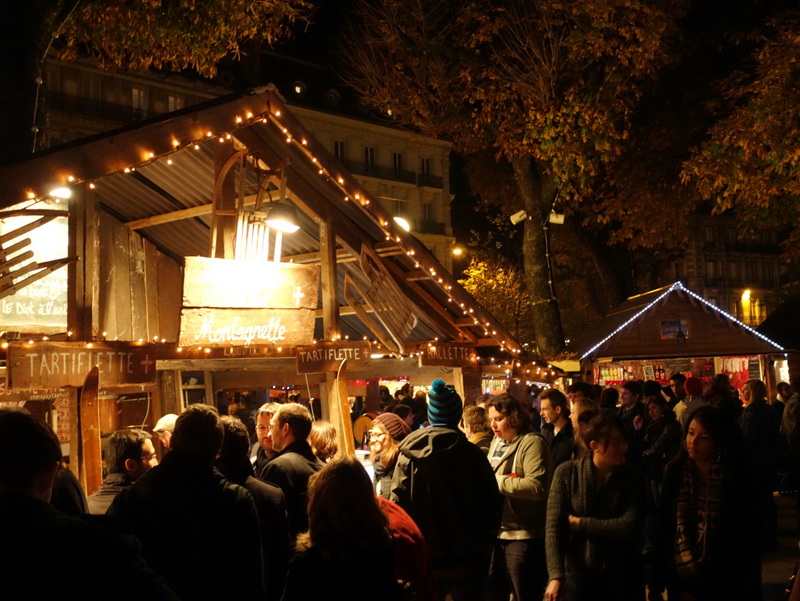
The mountain chalets and the 91 exhibitors offer several handcraft items: wooden toys, Christmas decorations, santons, jewels and original gifts. Local produce includes snails, ravioles gratins, seafood, foie gras, honey, gingerbread, and chocolates.
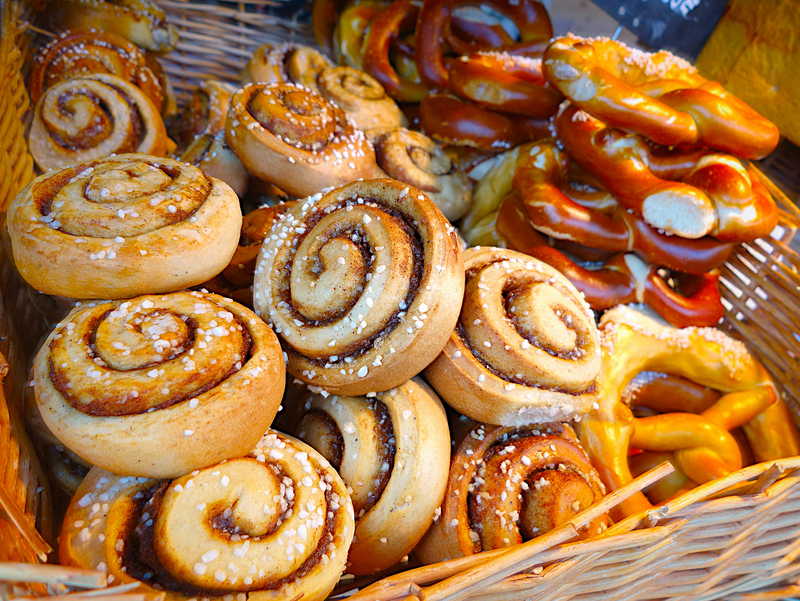
Under a marquee set on Place Victor Hugo, a sit-down temporary restaurant with space heaters offers a restful interlude to the discovery of this festive market.
The Christmas lights in the town of Grenoble are found on 200 sites and 120 streets.
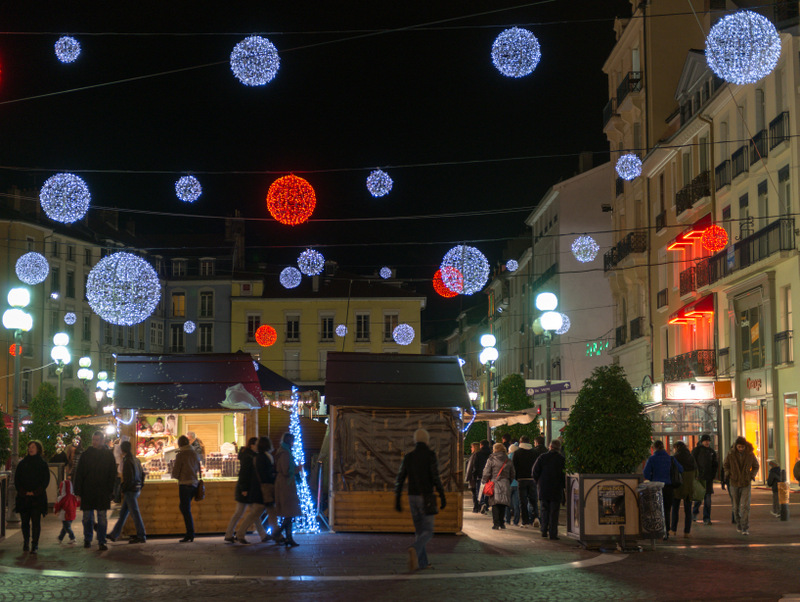
There are also live performances by local artists in Place Victor Hugo.
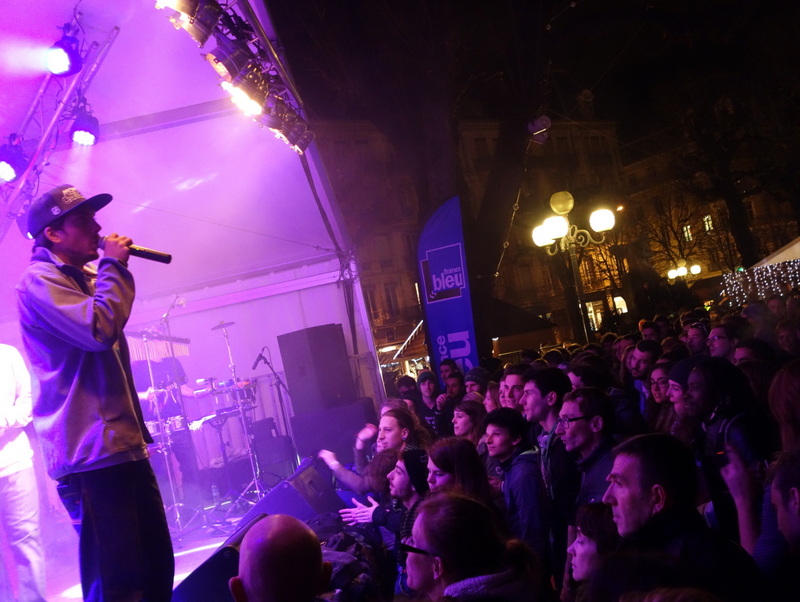

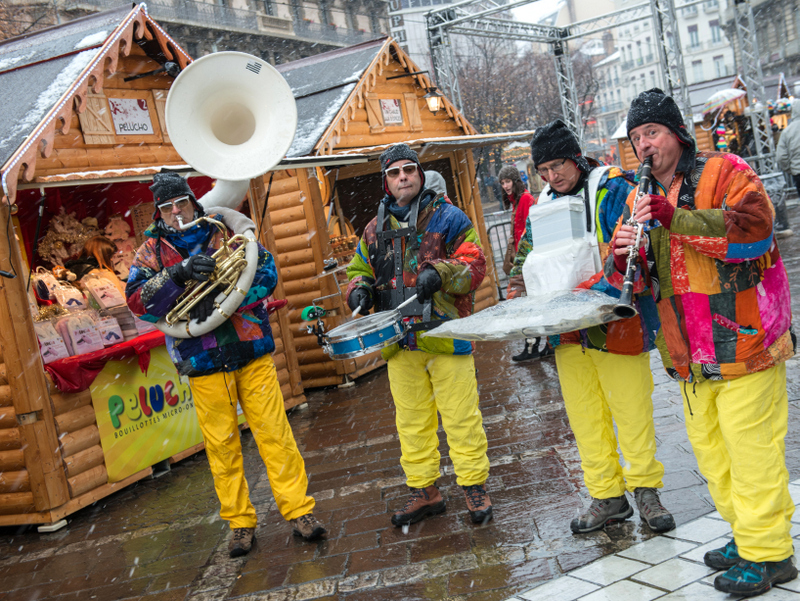
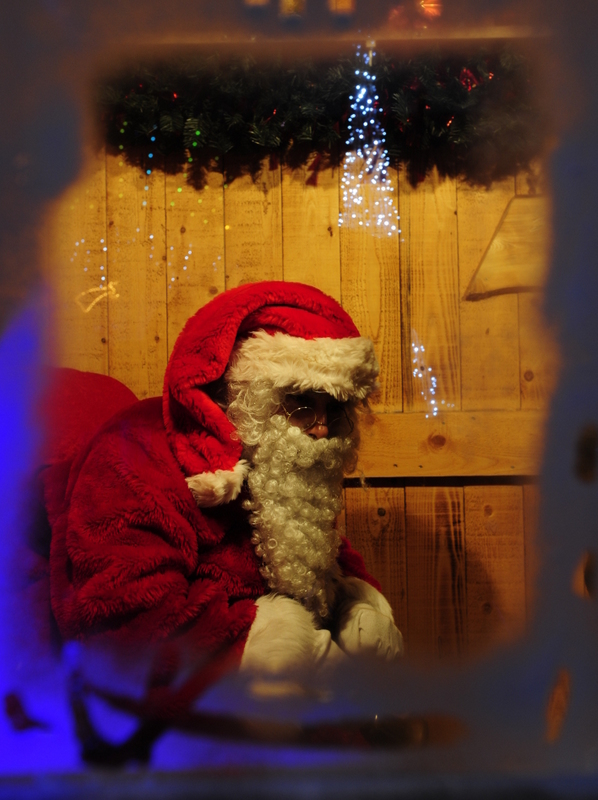
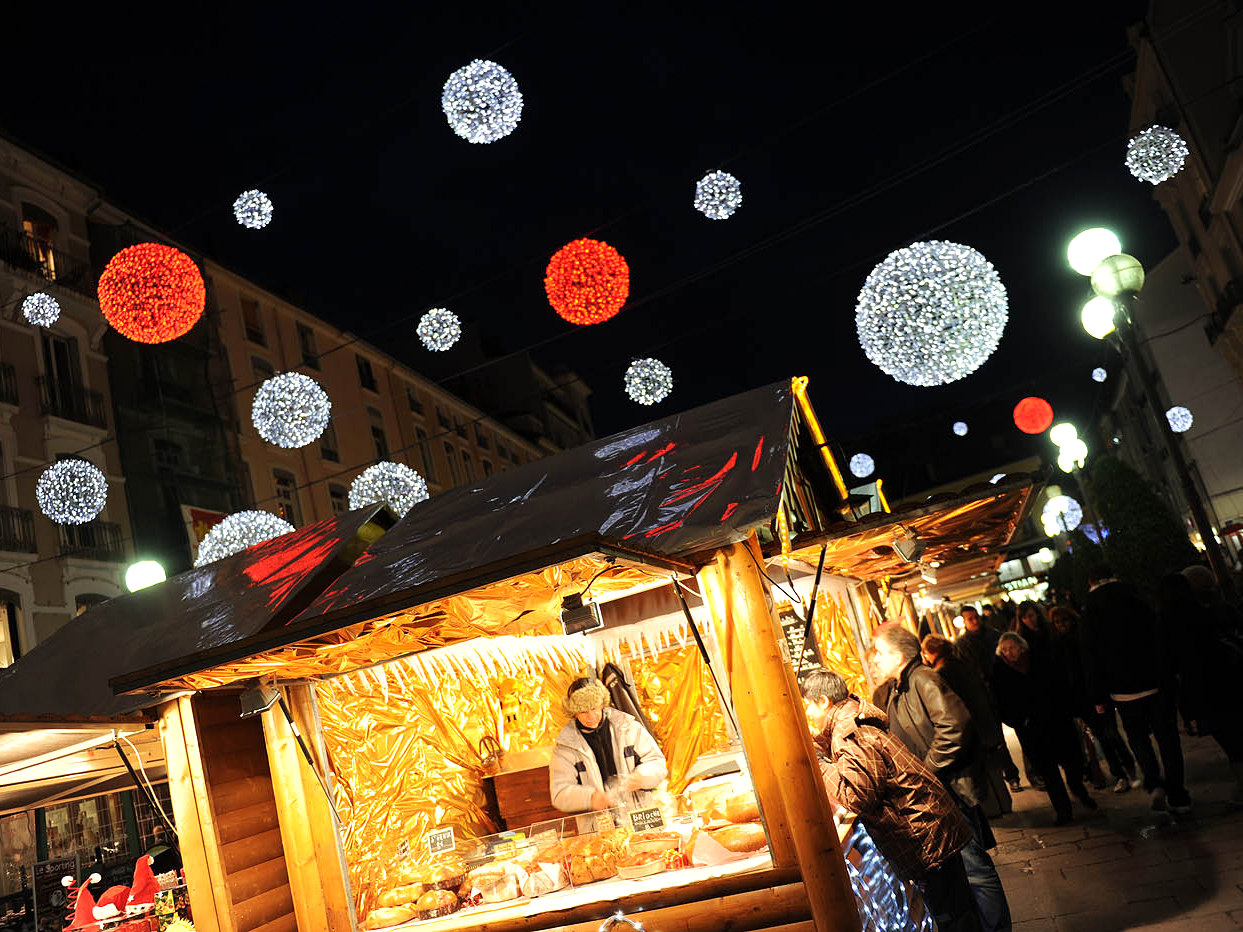
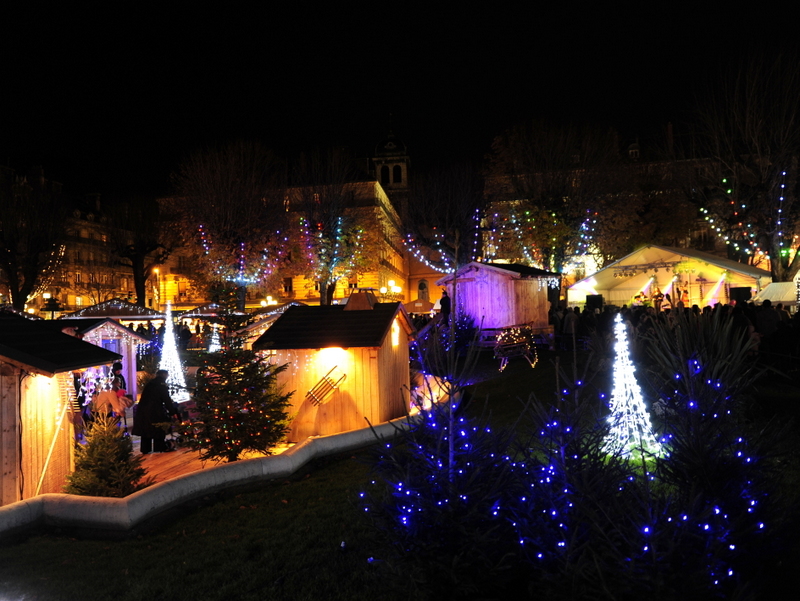
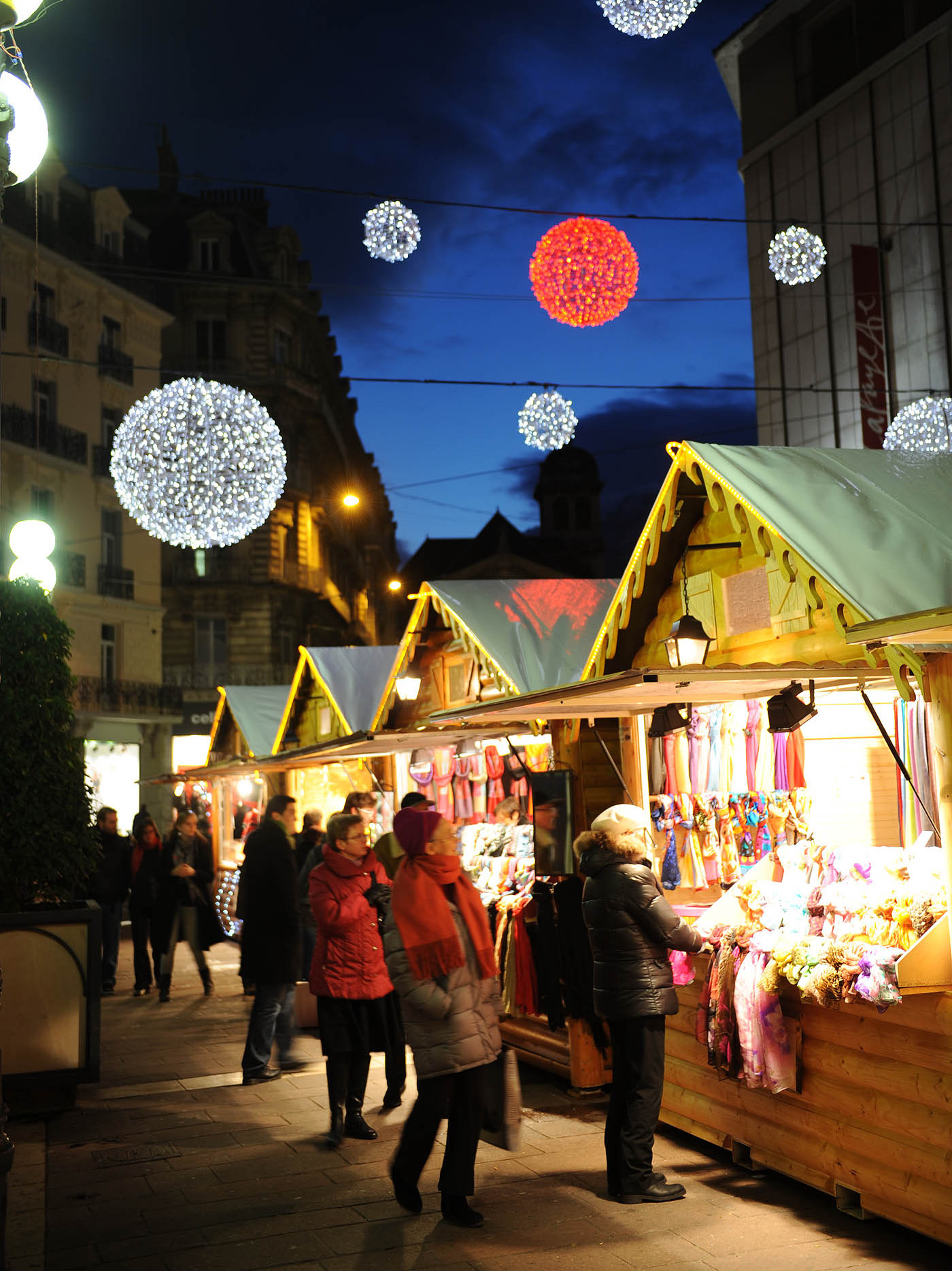
Discover Grenoble!
Grenoble is today the capital of the département of Isère (38) and the former capital of the Dauphiné.
Its agglomeration of 450,000 inhabitants makes it the most populous city in the Alps, ahead of Innsbruck (Austria) and Bolzano (Italy).
The city is approximately in the centre of the French part of the Alps. Its location, surrounded by nearby mountains, made Stendhal say:
“At the end of every street is a mountain”.
A bit of history
The history of Grenoble covers a period of more than two thousand years. In Ancient Times, the Gallic town was called Cularo and Gratianopolis under Roman rule.
Its importance increased in the 11th century when the Counts of Albon chose the city as the capital of their province, the Dauphiné.
The city became French in 1200 and experienced an economic boom. Grenoble became a parliamentary and military town, right on the border with independent Savoy.
In 1788, the population mobilised to defend its parliamentarians during the “Journée des Tuiles” by attacking the royal troops.
Grenoble’s industrial development began in earnest in the 18th century with the glove industry and increased in the second half of the 19th century with the discovery of “white coal” (hydroelectric power). But Grenoble experienced its most vigorous growth during the Trente Glorieuses, thirty years of economic growth in France between 1945 and 1975.
The organisation of the Winter Olympics in 1968 symbolises this period of significant change for the city. As its development continues, Grenoble is now a major European scientific centre.
What to see in Grenoble
The old town of Grenoble is also full of private mansions that recall its past as a parliamentary city. There is also the beautiful Flamboyant and Renaissance building of the Palais du Parlement du Dauphiné on the Place Saint-André.
The Grenoble Bastille cable car, also known as the “Grenoble bubbles” because of the shape of its spherical cabins, has been linking the city centre to Bastille Hill since 1934, with a difference in the height of 266 metres. The view from the Bastille fort extends over the whole of Grenoble.
Grenoble’s gastronomic heritage is best represented by its famous walnuts with which the Grenoble walnut cake is made.
About the Grenoble Christmas market
For more information about exploring Grenoble, visit the Tourist Board website of the city.
English-French Vocabulary
(f) for féminin, (m) for masculin, (adj) for adjective and (v) for verbs
- Advent = Avent (m)
- Alps = Alpes (f,p)
- Christmas = Noël
- Christmas Eve = veille de Noël (f) / réveillon (m)
- Christmas lighting = illuminations de Noël (f,p)
- Christmas market = marché de Noël (m)
- Father Christmas = Père Noël (m)
- holiday season = période de Noël (f), temps des fêtes (m)
- Santa = Père Noël (m)
- square = place (f)
- street = rue (f)
French Moments would like to thank the Tourist Office of Grenoble for allowing us to share their photos on this page, including the featured image.

